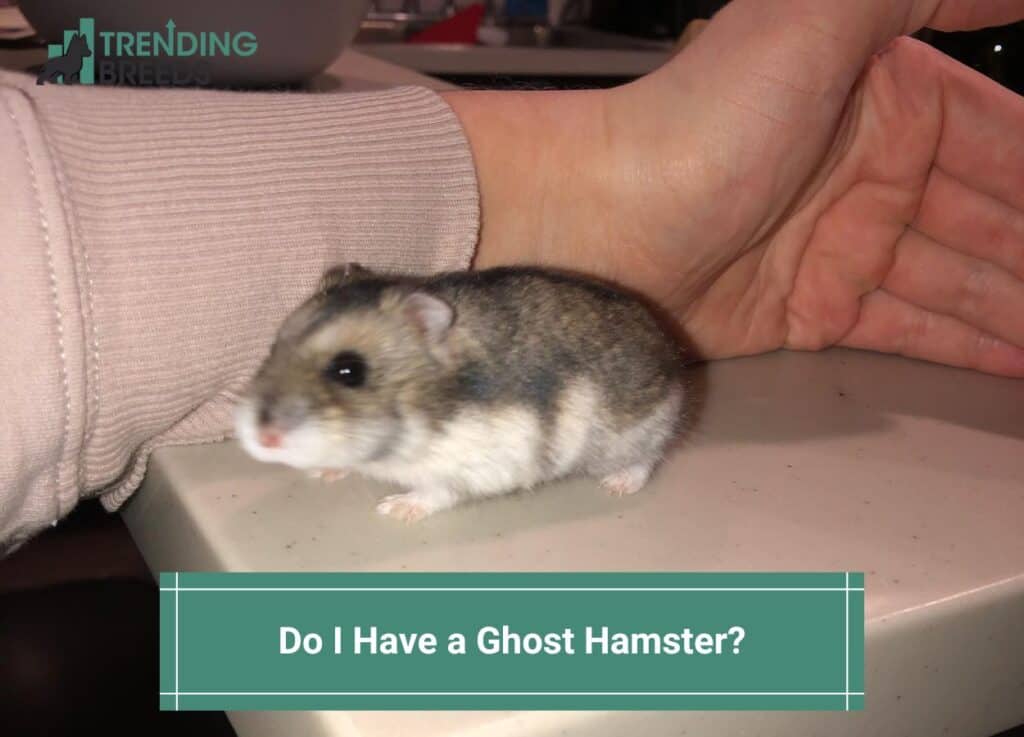
Hamsters can be delightful pets, especially when we observe them playing and running, seemingly never resting. But what does it mean when you have a ghost hamster?
During the day, hamsters tend to sleep and are most active at night.
However, even during the day, they may briefly wake up to drink water or eat before returning to their slumber.
However, what if your hamster remains entirely unseen? Does that mean you have a ghost hamster?
In such cases, you may have a ghost hamster. This term refers to a hamster that remains elusive, not seen eating, or visible.
The ghost hamster might be apprehensive about venturing out and socializing, requiring time to feel secure enough to escape hiding.
Read on to learn more.
Before you scroll further down this guide, check out these other hamster-related articles: Facts About The Teddy Bear Hamster and Dogs and Hamsters: What To Expect & How To Make It Work.
Table of Contents
What Is a Ghost Hamster?
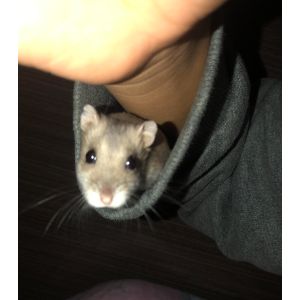
A ghost hamster is a term used to describe a pet hamster that frequently hides and is seldom visible.
This nickname does not refer to the hamster’s appearance but to its elusive behavior.
Ghost hamsters are ordinary because they are naturally skittish animals, leading them to retreat and conceal themselves within their cages.
Despite feeling like you have an invisible pet, there are various ways to engage with a ghost hamster.
Creating a comfortable and relaxed environment for your hamster increases the likelihood of them emerging from hiding and forming a stronger bond with you than usual.
Why Does Your Hamster Never Come Out?

Hamsters tend to hide and often remain concealed, only coming out to eat.
It is pretty challenging to catch a glimpse of them before they retreat into hiding, which is why they have earned the nickname “ghost hamsters.”
Several reasons can explain why a hamster may choose to hide and seldom come out:
Still Getting Used To You
Young and new hamsters tend to go into hiding immediately because they are not yet accustomed to human interaction.
The unfamiliar experience can be frightening for them, so it is commonly advised to leave the hamster alone initially and avoid handling it.
Nevertheless, some experts suggest a different approach. They recommend picking up, playing with, and interacting with the hamster from a young age.
This intentional interaction can help reduce their stress and gradually familiarize them with people.
New House

Bringing a new hamster home will require adjusting to its new surroundings.
It is best to allow new pet hamsters 7-10 days to acclimate to their new home with minimal disturbance.
Remember that the hamster has been taken away from its familiar and comfortable environment, and relocating can be pretty shocking for them.
Therefore, it is essential to be patient and give them the time to adapt to their new environment.
Change In The Environment
If you have owned a hamster for a while and notice it has become a ghost hamster, a recent change might have caused this behavior.
It is only sometimes moving to a new home that can unsettle a hamster; even more minor changes can significantly make the hamster feel stressed and prefer hiding.
Even seemingly minor changes like switching the bedding or adding or removing a toy can be enough to unsettle the hamster and contribute to its reclusive behavior.
Why Is Your Hamster Avoiding You?
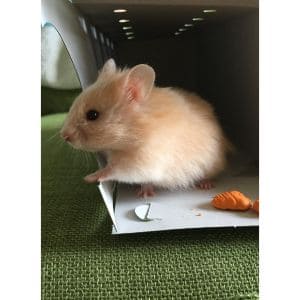
Upon bringing a hamster home, you probably anticipated forming a bond, cuddling, playing together, and witnessing its excitement in your presence.
However, despite having the hamster for some time, you are still waiting for those moments. Instead, the hamster scampers away as soon as you approach.
Hamsters, being small prey animals, have intricate fears and moods that can be challenging to comprehend.
Here are the reasons why your hamster might be avoiding you:
Avoiding Human Interaction
While hamsters may be comfortable being picked up, held, or played with, others prefer avoiding human interactions. Some hamsters dislike engaging with people.
This behavior might stem from bringing home an older hamster that lacked previous interaction or care in its last environment.
Consequently, it has grown accustomed to being left alone and prefers things that way.
On the other hand, if you brought home a baby hamster and began showering it with attention from the beginning, it would grow up knowing only that side of things and likely would not feel the need to avoid you.
To build a connection, you can entice the hamster to come to you during feeding time by offering food from your hand.
You can also try petting it gently while it feels safe in its habitat. If it runs away initially, keep going’ try again later, and be patient in your efforts.
Afraid Of You
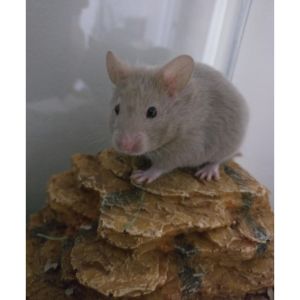
The hamster might fear you due to the significant size difference between you and them.
It is possible that sudden actions, such as bumping into its cage or loud noises, have startled and scared it.
It is reasonable to assume that hamsters raised in captivity might be more accustomed to quieter environments and less familiar with interactions with people.
If the hamster is new to your home, giving it time to adjust to its new surroundings is essential.
On the other hand, if it has been your pet for a long time and is showing fear, try enticing it over with food to build trust and familiarity gradually.
Will Keeping Two Hamsters Help?

If your hamster exhibits ghost hamster behavior, you can consider introducing another hamster into its cage.
When two hamsters coexist, the presence of a companion often helps the timid hamster feel less inclined to run and hide.
The presence of the other hamster can encourage play and interaction, which can be beneficial in overcoming reclusive behavior.
However, exercise caution and avoid putting two Syrian hamsters because this breed prefers solitary living and does not stay well in company. They like being alone in their cage.
On the other hand, for other hamster breeds, keeping two hamsters together in one cage is generally safe if you choose to do so,
Tips and Tricks To Help

Above all, ensuring your little ghost hamster’s comfort is crucial.
If your hamster is constantly hiding, there is a high likelihood it is feeling scared, and there is likely a valid reason for this behavior. To address this, you can take specific steps:
- Provide cozy bedding materials like shredded paper or fleece blankets to create a comfortable and safe hiding space for your ghost hamster.
- Maintain a quiet and low-distraction environment, allowing the hamster to feel more confident and secure to explore different areas of its habitat.
- Offering entertainment and enrichment options for your ghost hamster is essential. Providing puzzles, toys, and foraging materials will keep them mentally stimulated and engaged. Incorporating tunnels will also give them opportunities for exploration and play.
While ghost hamsters may never fully get comfortable being handled, you can still enjoy interactions with them from a distance, observing their behavior and appreciating their unique personalities.
Respect their boundaries and allow them to feel safe in their environment while enjoying simply watching and caring for them.
Additionally, it is essential to acknowledge that even though ghost hamsters might not be highly visible, they are still a valuable and cherished part of your family.
Respecting their behaviors and attempting to understand their actions is crucial.
While you may not see your hamster as frequently as you’d wish, you must not impose activities or behaviors that you know they will not enjoy.
Allow them to be themselves and appreciate their unique nature and preferences.
Building a bond with your ghost hamster requires patience, understanding, and acceptance of their individuality,
Try These Toys

Hamster Wheels
Hamsters are active creatures that enjoy running, and a hamster wheel is an excellent toy to satisfy their exercise needs.
A solid wheel with a smooth surface is preferable to prevent injuries.
Chew Toys

Hamsters have continuously growing teeth, and chewing is vital to keep their teeth in check.
Provide wooden chew toys with safe materials like applewood or untreated pine to prevent dental problems.
Tunnel Systems
Hamsters love exploring and burrowing, so tunnel systems or tubes provide hours of entertainment.
Opt for plastic or cardboard tunnels that can be rearranged to create different paths for added stimulation.
Hamster Balls

Hamster balls allow your pet to explore beyond its cage while keeping them safe from potential hazards. Supervise its usage and limit playtime to prevent overheating or exhaustion.
Climbing Toys
Hamsters enjoy climbing, and providing ladders or platforms in their cage can satisfy this natural behavior. Use safe, sturdy materials to prevent accidents.
Foraging Toys

Encourage your hamster’s natural foraging instincts by offering toys that hide treats or food. Puzzle feeders and treat balls stimulate their minds while providing a rewarding activity.
Rope and Vine Toys
Soft rope or vine toys allow hamsters to gnaw on and create nests. These toys help with dental health and provide a cozy environment for them to relax.
Wooden Play Blocks
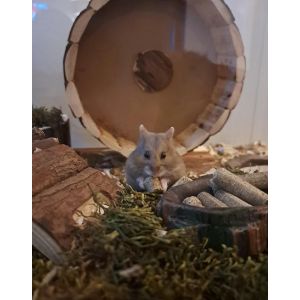
Safe wooden blocks allow hamsters to chew, climb, and play. Arrange the blocks creatively to make an interactive play area in their cage.
Swing or Hammock
Hamsters enjoy gentle swaying movements, so a small swing or hammock can be a delightful addition to their habitat.
Cardboard Boxes and Tube
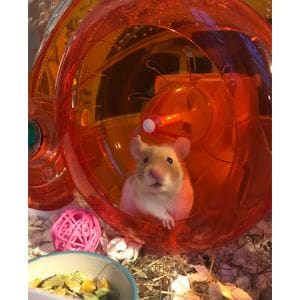
Simple cardboard boxes or tubes are budget-friendly toys that hamsters love to explore and chew. These can be replaced easily when they wear out.
Always ensure that any toy you provide is safe, free from sharp edges, and made of non-toxic materials.
Rotate and change the toys regularly to keep your hamster engaged and prevent boredom.
Remember, each hamster is unique, so observe your pet’s preferences and adjust the toy selection accordingly.
Do I Have a Ghost Hamster
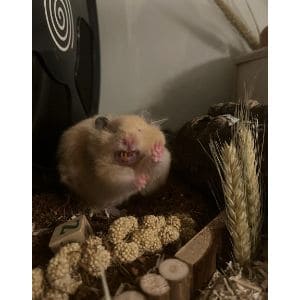
Hamsters can bring joy and companionship as delightful pets.
Understanding their natural behaviors, such as being active at night and hiding during the day, can help you appreciate their unique nature.
If you encounter a ghost hamster that remains elusive, creating a comfortable and secure environment for them is essential.
Respect their need for privacy and give them time to adjust to new surroundings or changes.
While some hamsters may never be comfortable with human handling, fostering a bond through observation and providing entertainment and enrichment can still lead to a rewarding relationship.
By offering a variety of safe and stimulating toys, you can keep your hamster mentally and physically active, promoting their overall well-being.
Remember that each hamster has its personality and preferences, so tailoring your approach to their needs will contribute to a fulfilling and harmonious experience with these endearing furry hamsters.
If you find this guide, “Do I Have a Ghost Hamster,” informative and helpful, you can check out these other animal-related articles from our team:
You can learn more about hamsters by watching “25 Facts About Hamsters 🐹” down below:




